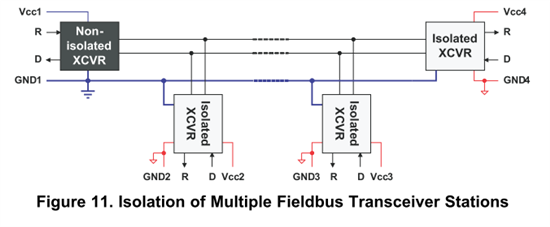Hello experts,
I want to know the right way to terminate two isolated RS485 end nodes for high common mode conducted noise (150K-100MHz) immunity. I am using SN75176B with a couple of opto-couplers and isolated power module to implement the isolated RS485 transceiver.
I figured out four possible schemes. There might be more. Could you help to point out the right one and explain why?
Thanks in advance.



